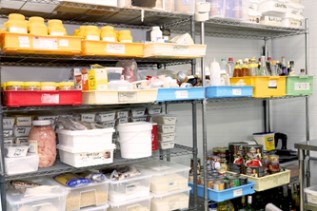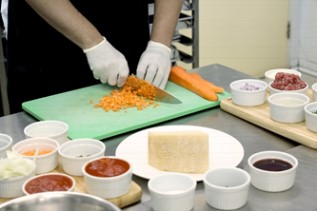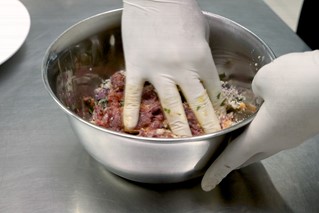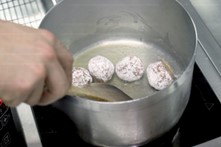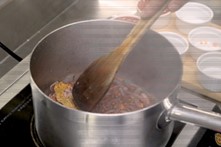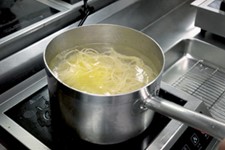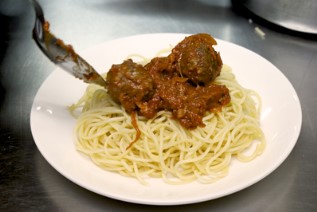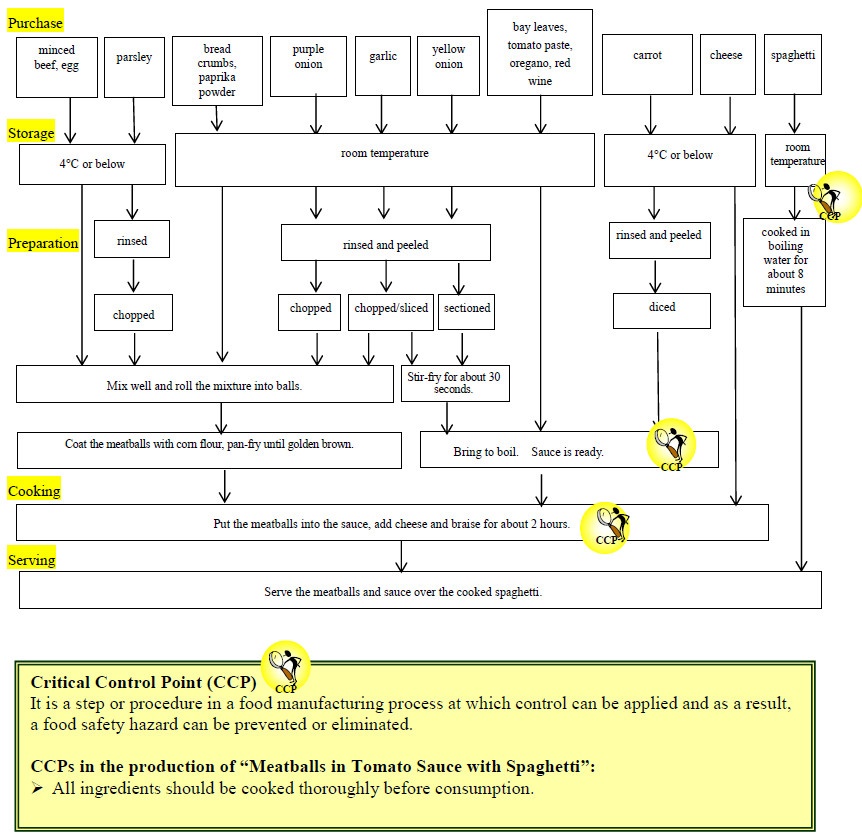
Feature Article
Risk of Parasitic Infection from Consumption of Raw Marine or Freshwater Fish
Background
Recently, there were discussions about whether rainbow trout (Oncorhynchus mykiss), a freshwater fish, can be called “salmon” as it belongs to the Salmonidae family, which includes the Atlantic salmon. Meanwhile, a local TV programme introduced grass carp “yu sang” (or raw fish) as a delicacy. The community is concerned about the food safety of freshwater fish sashimi.
Fish-borne Parasites Can Infect Humans
Fish-borne parasites are common in both marine and freshwater fish. Some of these parasites, such as nematodes and trematodes, can infect humans. Anisakis is a common species of nematodes in marine fish, while the trematode Clonorchis sinensis (the Chinese liver fluke) (Figure 1) is commonly associated with freshwater carp and the related species. Clonorchiasis, or the Chinese liver fluke disease, is endemic in Southeast Asia and East Asia. The affected patients are mostly in China.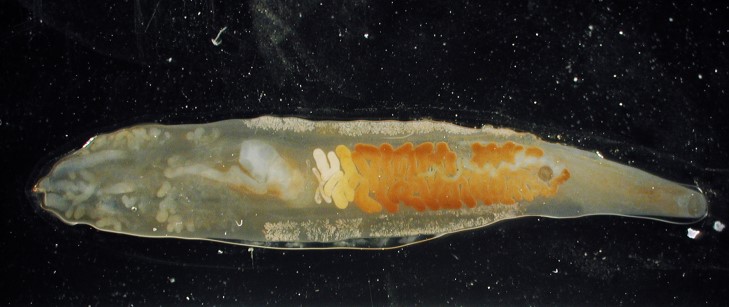
Figure 1: Clonorchis sinensis under microscope
(Source: Dr Samson S.Y. WONG, Assistant Professor (Clinical), Department of Microbiology, University of Hong Kong)
Fish-borne parasites have complex life cycles involving multiple intermediate hosts. Unfortunately, some commercially important fish like grass carp are intermediate hosts to these parasites. During the rearing period, these fish may acquire the eggs or cysts of the parasites through the contaminated environment or the feed ingested. People will be infected if they consume raw or undercooked fish containing the parasites.
Good Aquaculture Practices Can Greatly Reduce the Risk of Parasitic Infestation
Some European countries (e.g. Norway) have developed special aquaculture practices to control parasitic infection in farmed fish (Figure 2). It has been accepted by the European Union (EU) that farmed fish reared in a parasite-free environment since the embryo stage and fed on parasite-controlled diets (e.g. feed that has been heat-treated) have a much lower risk of parasitic infection. Even so, it is hard to prevent the presence of parasites in farmed fish and their products must be subject to regular inspection. However, fish cultured in Southeast Asia, such as grass carp, are not traditionally raised in such a controlled environment.
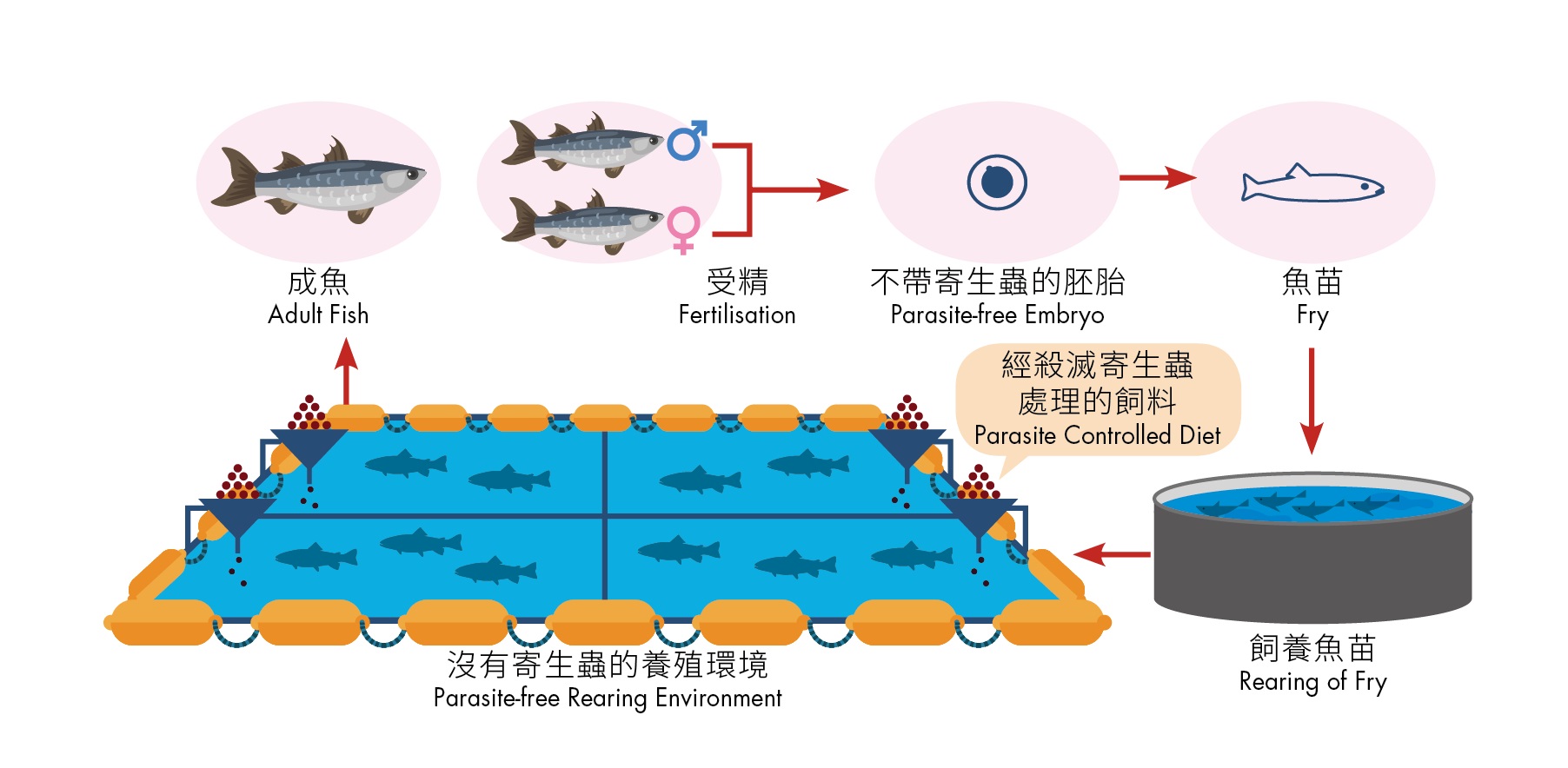
Figure 2: Good aquaculture practices help reduce the risk of parasitic infestation.
Killing Parasites in Fish by Freezing
To deal with parasites in fish, the EU and the Food and Drug Administration of the United States require fishery products intended to be consumed raw to go through freezing treatment, so as to reduce the risk of parasitic infection. Only fish products produced in a properly controlled environment are exempted.
In short, we should choose the proper ways to eat fishery products. Marine and freshwater fish and their products can be contaminated with parasites if the fish are not reared in a controlled environment or their products are not treated properly (Figure 3). Therefore, it poses a risk of contracting parasites when fishery products are consumed raw.
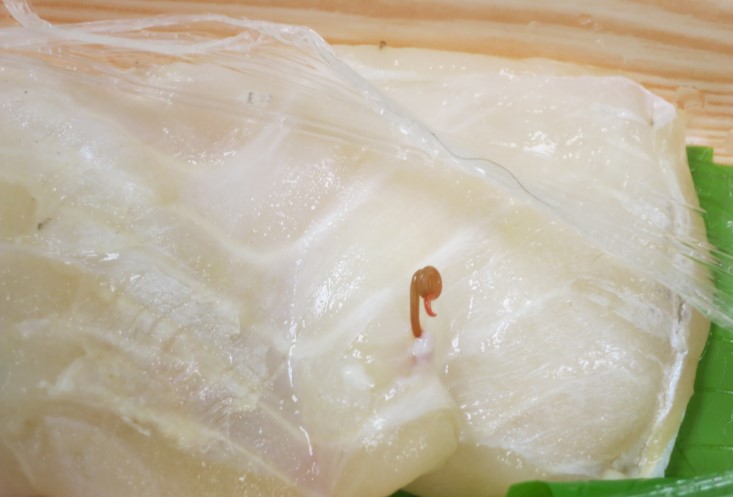
Figure 3: Raw fish found with a suspected parasite in a food complaint case
Key Points to Note
- Both marine and freshwater fish may carry a variety of parasites.
- There is an inherent microbiological risk in consuming raw fish.
- Good aquaculture practices and freezing treatment can greatly reduce the risk of parasitic infection.
Advice to the Public
- Purchase fish from reliable and licensed premises.
- Susceptible populations, including the elderly, young children, pregnant women and people with weakened immune systems, are advised not to consume raw fish.
- The best way to avoid fish-borne parasitic zoonoses is to cook fishery products properly.
Readers' Corner
Food Ordering Apps and Food Safety
Food ordering mobile applications (food ordering apps) are becoming more popular in recent years. Unlike the conventional way of ordering foods and requiring delivery service by the food premises, these apps allow customers to place food orders with premises in a wider area, with food delivery arranged by the apps service providers.
Compared with the conventional mode of meal delivery, the new mode requires a delivery person to pick up foods from a restaurant. The time pending food delivery may thus be longer. Besides, some food items may be purchased in bulk and delivered in insulation containers to an outdoor location for pick up by individual customers, which will add to the time of food delivery and distribution. Delivered meals usually include perishable foods. If there is no proper time and temperature control during food delivery, microorganisms (including pathogens) that may be present in foods can multiply rapidly and make people sick. No matter it is the new or the conventional mode of delivery, food safety risks will increase in the absence of proper time or temperature control. To address potential food safety risks arising from delivered meals, it is important to maintain proper time and temperature control for foods.
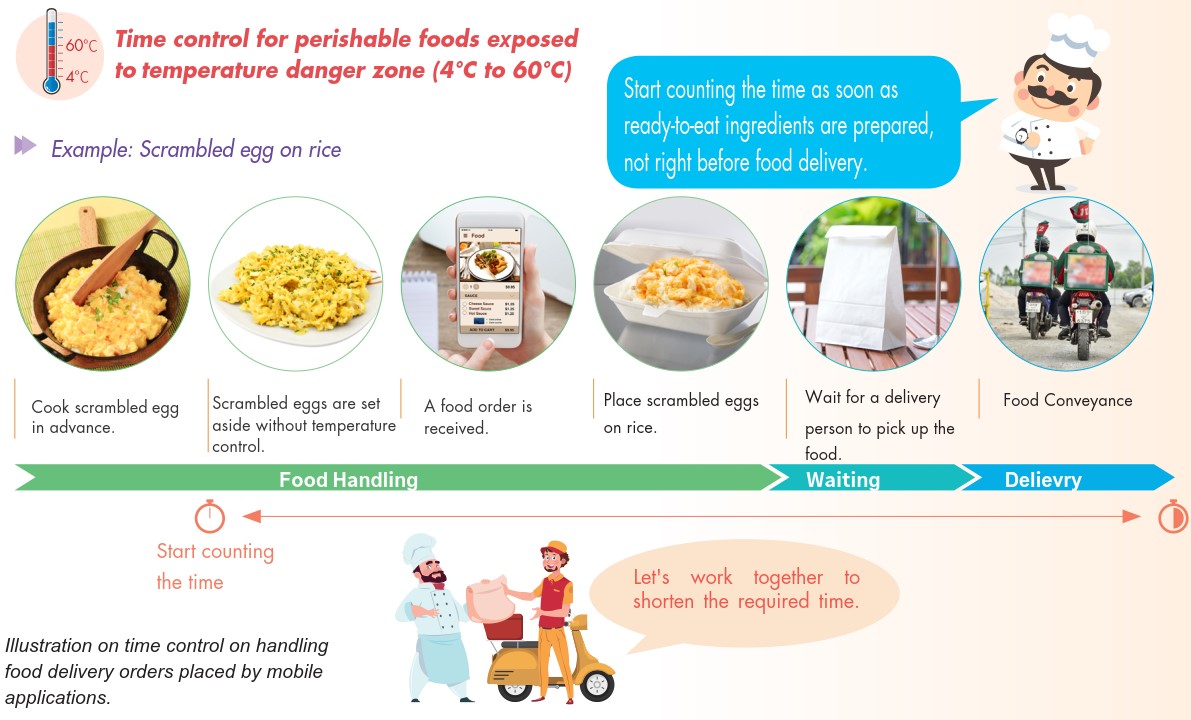
Time and Temperature Control for Safe Consumption of Delivered Foods
To ensure that delivered foods are safe for consumption, it is advisable to keep hot foods at above 60°C and cold foods at/below 4°C. Most pathogenic bacteria proliferate at temperatures between 4°C and 60°C. This range of temperature is known as the “temperature danger zone”. To keep delivered foods out of this danger zone, we can take steps such as using insulated containers, keeping food in a warmer or cooler before delivery, and avoiding preparing food too early.
Food safety has a connection with time and temperature control. If foods are delivered within the temperature danger zone, the only safeguard will be proper time control in advance. There are two time limits for keeping perishable foods, namely the two-hour limit and the four-hour limit.
- Prepared foods should be discarded if they have been held at room temperatures for more than four hours;
- Prepared foods kept at room temperatures for not more than two hours can be refrigerated for later use or consumed within the four-hour limit.
The longer the time foods are delivered without temperature control, the shorter the time is left for safe consumption by customers.
Time Within Temperature Danger Zone
The time foods are kept within the temperature danger zone is cumulative, i.e. each period of time that foods have been left under ambient conditions, including food handling, storage and transportation, should be added up to calculate the total time of exposure (see the above illustration). Individual ready-to-eat ingredients may be prepared in advance and kept aside at ambient temperatures. If these ingredients do not need further processing or no means is taken to control microbial growth, the time that the ingredients have been exposed to the temperature danger zone should be added up with the two-hour and four-hour principles in view. With respect to food delivery, both the food handler and the delivery person should work out arrangements together to fulfil the time and temperature control requirements for food safety.
Key Points to Note
- Delivered meals usually include perishable foods. Microorganisms that may be present in foods can proliferate and cause illnesses if foods are delivered without proper time and temperature control.
- Keep hot food at above 60°C and cold food at/below 4°C to ensure safe consumption of delivered foods. If perishable foods are kept within the temperature danger zone, the two-hour and four-hour principles should be followed.
- Add up all periods of time that foods, including individual ingredients, have been exposed to the temperature danger zone to calculate the total time of exposure.
Advice to the Public
- Order delivered foods only from reliable and licensed food premises.
- Check the general conditions of delivered foods, such as the food temperature and the integrity and hygienic conditions of the food container, especially for foods intended for raw consumption (e.g. sashimi and sushi).
- Delivered foods should be consumed as soon as possible, particularly when we are uncertain about the time that the foods have been handled without temperature control.
News on New Dishes
Metalballs and Spaghetti in Tomato Sauce
Meatballs and spaghetti is a classic combination in western cuisine. In this issue, we bring you an Italian dish “Meatballs and Spaghetti in Tomato Sauce” prepared by Mr Robin Harart, the chef of Invisible Kitchen, a signatory of the Food Safety Charter. This is a savoury dish which many people would like to have for a main course. You can give it a try too.
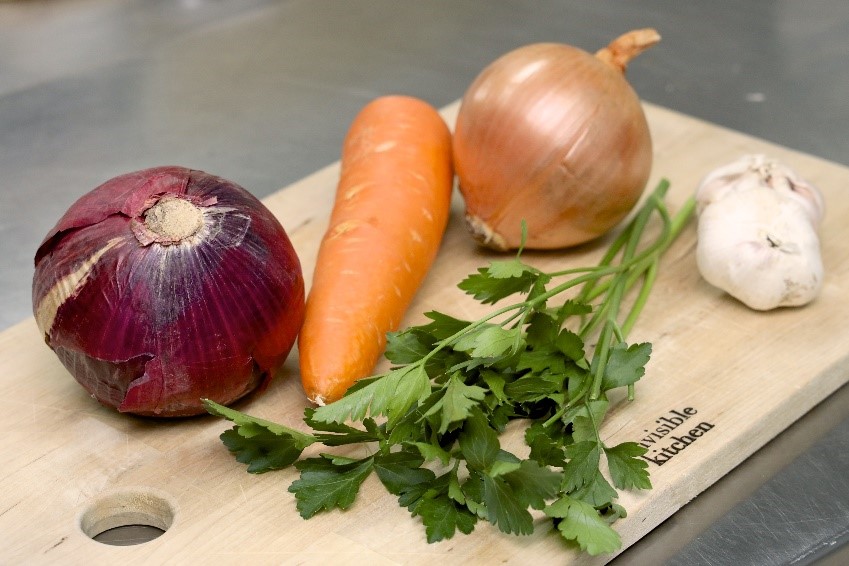
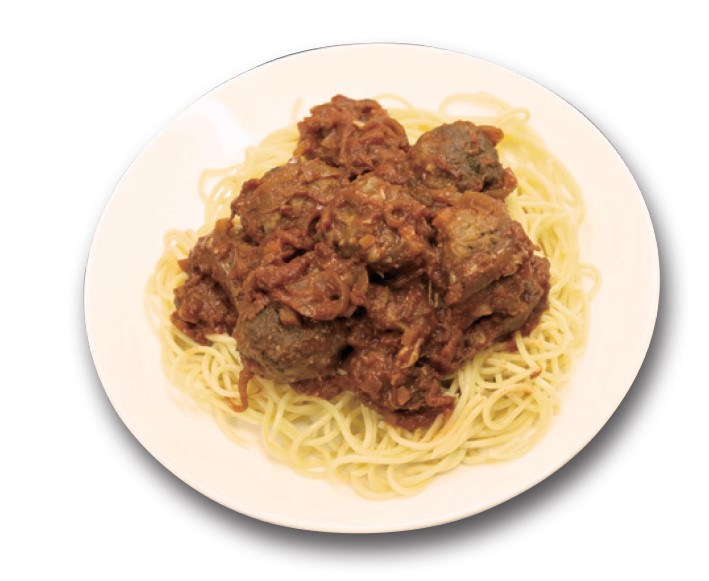
| Preparation Steps | Small Tips, Big Wisdom | |
|---|---|---|
|
Receiving |
Purchase minced beef, egg, cheese, parsley, carrot, spaghetti, purple onion, yellow onion, garlic, bay leaves, bread crumbs, paprika powder, tomato paste, oregano and red wine from approved and reliable suppliers. |
Upon receipt of the ingredients, check carefully to ensure their freshness. The minced beef, parsley, egg, cheese and carrot should be refrigerated at 4°C or below. Place the purple onion, yellow onion, garlic, bay leaves, bread crumbs, paprika powder, tomato paste, oregano and red wine on shelves in an orderly manner. Foods should be consumed within their shelf life. Stick to the “first-in-first-out” principle and use the oldest stocks with the shortest shelf life first. |
|
Rinsing & Cutting |
Rinse parsley, carrot, purple onion, yellow onion and garlic thoroughly. Finely chop the parsley leaves. Cut the carrot, purple onion, yellow onion and garlic into fine pieces/sections/slices after peeling. |
Rinsing the ingredients thoroughly under clean running water can effectively remove unwanted substances and reduce the risk of pesticide intake. Chopping the ingredients into fine pieces helps shorten the cooking time. |
|
Mixing |
Place minced beef, egg, parsley, chopped purple onion and garlic, bread crumbs and paprika powder into a mixing bowl. Blend well and slap the mixture until sticky. |
Wearing disposable gloves in food preparation is a convenient way to ensure food hygiene. |
|
Pan-frying |
Roll the mixture into balls and coat them with corn flour. Heat up the saucepan and add in some olive oil. Pan-fry the meatballs until golden brown. |
Coating the meatballs with corn flour and pan-frying them until golden brown can seal in juices. |
|
Sauce preparation and cooking |
Stir-fry yellow onion and garlic slices with olive oil until aromatic. Add in carrot, bay leaves, tomato paste, oregano and red wine to prepare the sauce. Bring the sauce to boil. Put the meatballs into the sauce and add cheese. Switch to medium fire and braise for about 2 hours. Bring water to boil, add in the spaghetti and cook for about 8 minutes.. |
Natural spices are tasty and healthy alternatives to artificial seasonings. |
|
Serving |
Serve the spaghetti with the meatballs and sauce. |
Cooked food should be consumed as soon as possible. If the food is not eaten immediately, it should be cooled quickly and refrigerated within 2 hours. Food left at room temperature for more than 4 hours can allow bacteria to grow easily and should not be consumed. |
Tips from the Chef:
- Choose beef rump for its low fat content. It is a healthy ingredient for a delicious dish.
- Placing a piece of parchment paper on top of the saucepan can prevent excessive evaporation of water in sauce preparation.
- Use honey and water instead of red wine if the food is prepared for children
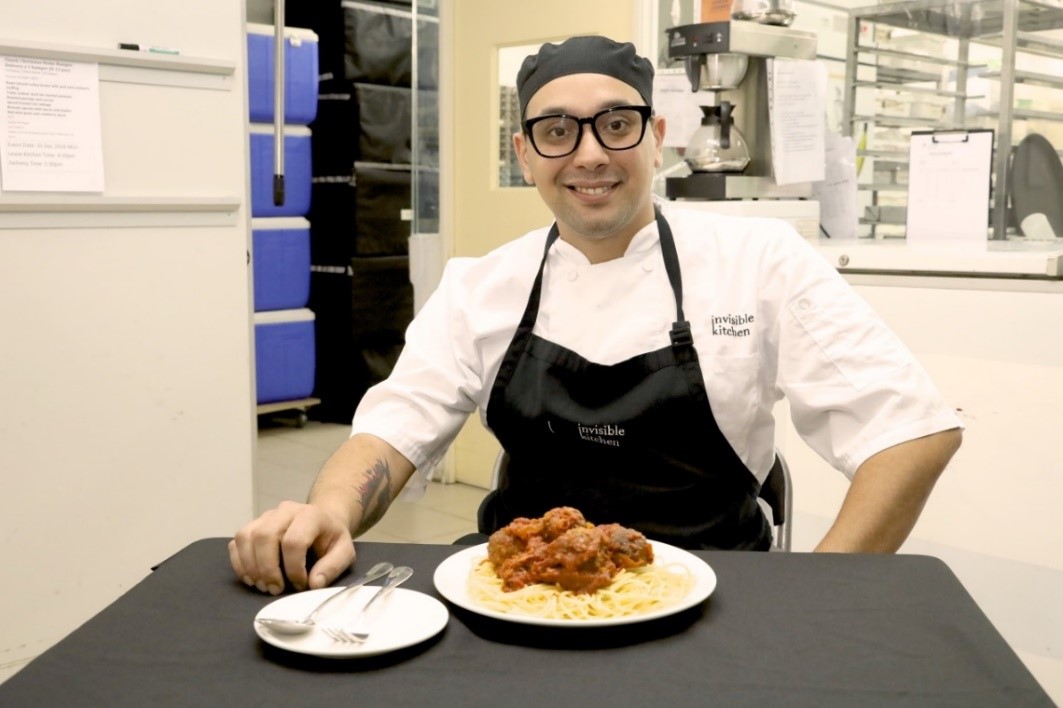
Food Safety Plan Corner
Meatballs and Spaghetti in Tomato Sauce
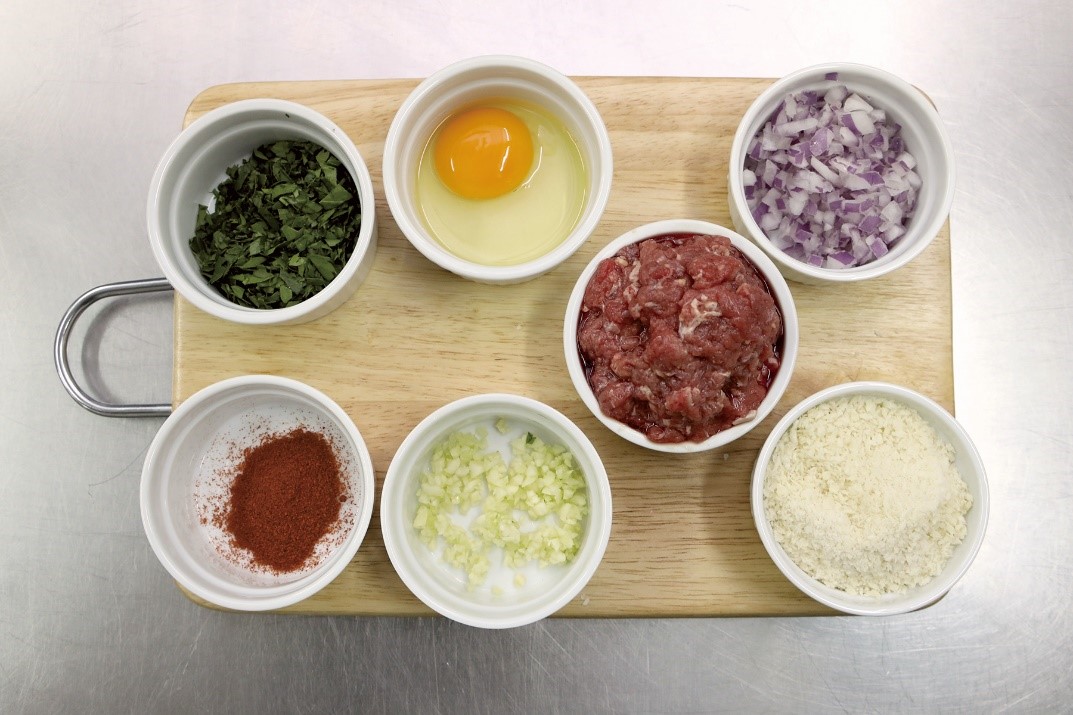
Ingredients:
Minced beef, egg, cheese, parsley, carrot, spaghetti, purple onion, yellow onion, garlic, bay leaves, bread crumbs, paprika powder, tomato paste, oregano, red wine.
Steps:
- Take out minced beef, egg, cheese, parsley and carrot that are refrigerated at 4ºC or below. Rinse the parsley and carrot under clean running water. Finely chop the parsley leaves. Peel and dice the carrot for later use.
- Get purple onion, yellow onion, garlic, bay leaves, bread crumbs, paprika powder, tomato paste, oregano and red wine from the dry goods shelves. Rinse and peel the purple onion, yellow onion and garlic. Finely chop the purple onion and section the yellow onion. Cut the garlic into fine pieces and slices.
- Place minced beef, egg, parsley, chopped purple onion and garlic, bread crumbs and paprika powder into a mixing bowl. Blend well and slap the mixture until sticky.
- Roll the mixture into balls. Coat the meatballs with corn flour, pan-fry until golden brown. Set aside for later use.
- Heat up the saucepan and add in some oil. Stir-fry yellow onion sections and garlic slices for about 30 seconds. Add in carrot, bay leaves, tomato paste, oregano and red wine to prepare the sauce. Bring the sauce to boil. Put the meatballs into the sauce and add cheese. Switch to medium fire and braise for about 2 hours.
- Bring water to boil, add in the spaghetti and cook for about 8 minutes. Serve the meatballs and sauce over the cooked spaghetti.
Production Process
Briefing of Activities
6th Certificate Presentation Ceremony of Consumer Liaison Group
The Consumer Liaison Group (CLG) organises activities and focus group meetings to gauge the understanding, conceptions and risk awareness of the public on food safety, with a view to developing more effective risk communication strategies tailored to consumers’ needs. The CLG members can give their views on topics related to food safety, risk communication, etc. They will also gain a better understanding of the food safety efforts of the Government.
The 6th CLG Certificate Presentation Ceremony was held on 10 November 2018 at the Assembly Hall of Lai Chi Kok Government Offices. The officiating guests included Dr Philip HO Yuk-yin, Controller, Centre for Food Safety (CFS), and Dr Samuel YEUNG Tze-kiu, Consultant (Community Medicine) (Risk Assessment and Communication) and Dr Henry NG Chi-cheung, Principal Medical Officer (Risk Assessment & Communication) from the CFS.

Dr HO marked the opening of the ceremony with an address expressing appreciation for members’ participation in the CLG activities. Certificates were presented and a group photo was taken. The CLG members then had a group meeting to exchange views on various topics. The ceremony provided an opportunity for communication with the CLG members to enhance understanding of their perceptions and expectations on food safety.

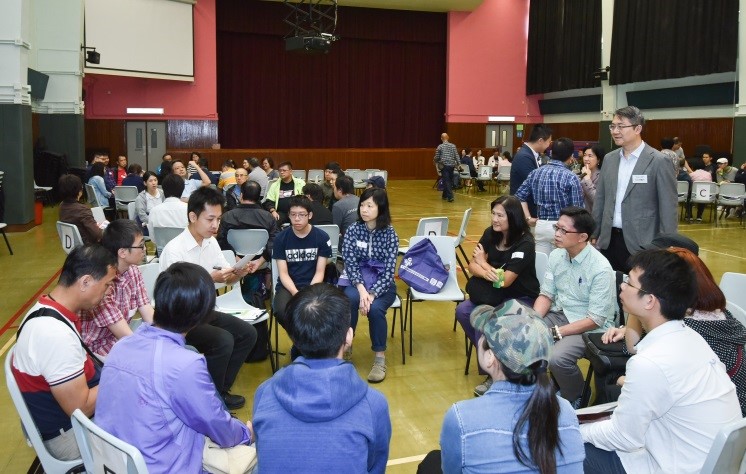
Upcoming Activities
School Talks on Food Safety 2019
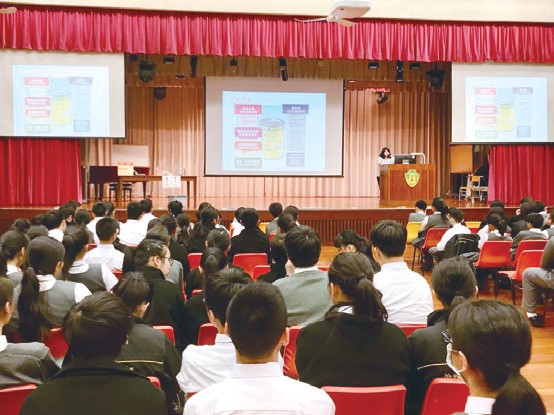
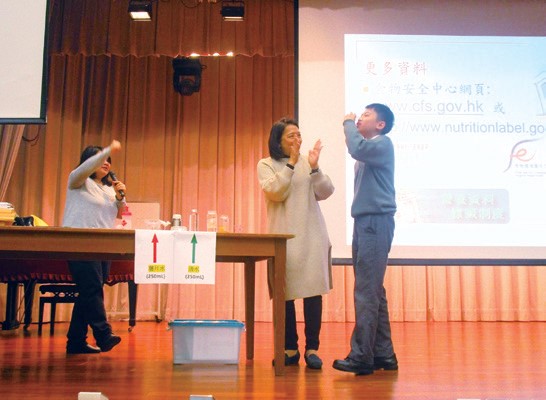
To enable school children to better understand the importance of food safety, the CFS disseminates food hygiene messages among students through a host of channels. For instance, Health Inspectors of the Communication Resource Unit (CRU) are arranged to deliver food safety talks in primary and secondary schools to share food-related knowledge with students, thereby heightening their awareness of food safety and promoting healthy eating habits. On some occasions, interactive activities such as colouring competitions and tasting sessions on sugar/salt content in foods will be included to make the talks more interesting.
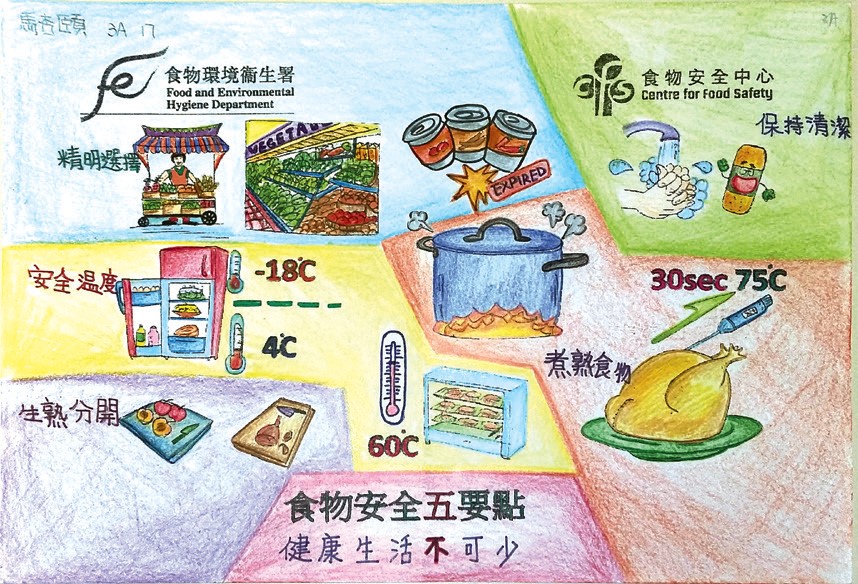
Figure: Winning work of “Five Keys to Food Safety” Creative Colouring Competition
(Miss MA Hang-yee, Kowloon Tong Government Primary School )
The CRU regularly writes to primary and secondary schools to invite their enrolment for school talks on food safety. Themes of the talks include "Nutrition Labelling", "Food Poisoning", "Five Keys to Food Safety", "Natural Toxins in Food", "Veterinary Drug Residues in Food" and "Genetically Modified Food". Interested schools can reply and make an appointment for Health Inspectors to deliver a talk in the school and distribute leaflets and other publicity materials to the students.
Food Safety Q&A
Is It Safe To Eat Fish Gall Bladders?
In late 2018, it was reported that a man in Sichuan Province developed vomiting and diarrhoea, followed by acute liver and kidney failure, after consuming three gall bladders of raw fish. In Hong Kong, a member of the public was also hospitalised with acute renal and liver failure following the consumption of a stewed grass carp gall bladder.
Such acute poisoning is believed to be caused by chemicals associated with cyprinol. These chemicals can affect the liver, kidney and cardiovascular system, and (in some cases) even the central nervous system. Death was also reported.

Fish gall bladders and their bile, including those of grass carp, may contain a composite of toxic substances, microorganisms and parasites. Moreover, some toxins like sodium cyprinol sulfate found in fish gall bladders are heat stable and cannot be decomposed by cooking. The ingestion of fish gall bladders may lead to the multiple organ dysfunction syndrome, which is induced by toxins and can be fatal. Currently, there is no antidote for the treatment of fish gall bladder poisoning.
To avoid food poisoning caused by toxic substances, it is advisable not to consume fish gall bladders, whether in their raw state or after preparation by cooking.
Truth Against Fallacy
Are Pastured Eggs Safer for Consumption?
Granny Lee was on her way home after shopping at the market. She was greeted by Uncle Kin, the security guard of her building, at the lift lobby.
Uncle Kin: Good morning, Granny Lee. You've bought a lot of food.
Granny Lee: Yes. I've bought some pastured eggs this morning. People say they are real fresh and can be eaten raw.
Uncle Kin: What? Eating raw eggs? Please don't do that.
Granny Lee: Why not?
Uncle Kin: I've seen an article on the Facebook page of the Centre for Food Safety. It says that regardless whether the egg laying chickens are pasture hens or battery cage hens, their eggs are not laid in a sterile environment. The eggs may be contaminated with bacteria like Salmonella. In fact, bacteria can get into eggs by penetrating through the pores or cracks on the shell. An egg may also be contaminated when you crack open it. So, regardless of the ways chickens are raised, their eggs must not be eaten raw. We should also avoid eating inadequately cooked eggs and egg products. The elderly, babies and pregnant women should be particularly careful about this. Actually, eggs should be thoroughly cooked until the yolk and the white are firm before consumption. When storing eggs, we should also pay attention to the expiry date and storage temperature on the package or the food label of the eggs.
Granny Lee: Oh, I see. It's good you told me this. Thank you.
Uncle Kin: Don't mention it.
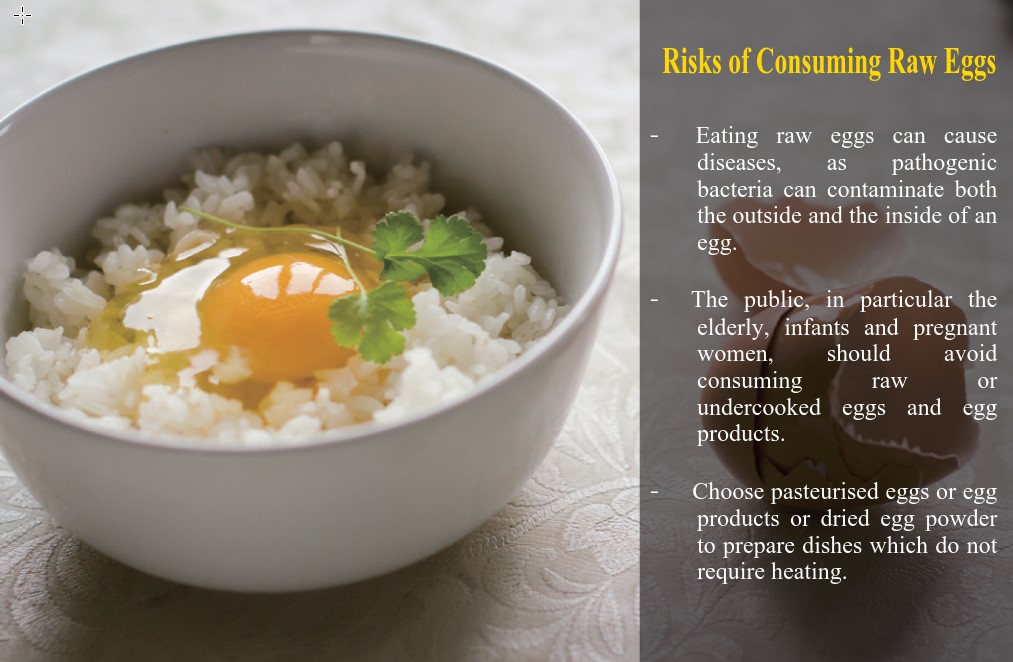
Brain Gym
- Some fish-borne parasites like nematodes and trematodes can infect humans.
Answer: True/False - If foods are delivered without proper time and temperature control, microorganisms including pathogens that may be present in foods can multiply rapidly and make people sick.
Answer: True/False - There are two time limits for keeping perishable foods, namely the twenty-hour limit and the forty-hour limit.
Answer: True/False - The ingestion of fish gall bladders may lead to the multiple organ dysfunction syndrome, which is induced by toxins and can be fatal.
Answer: True/False - Pastured eggs can be eaten raw.
Answer: True/False
Answers: (1) True (2) True (3) False (4) True (5) False
